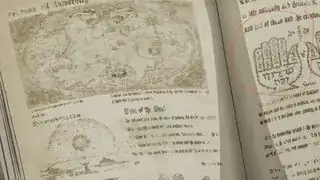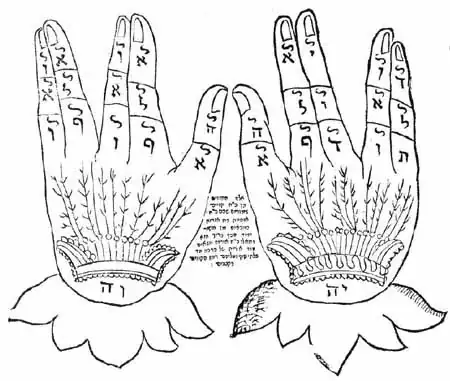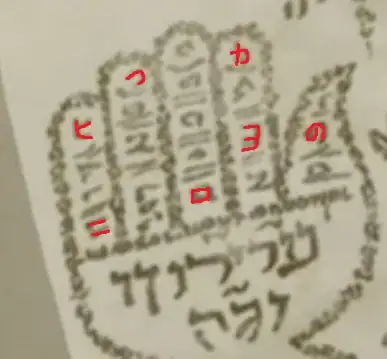At the beginning of episode 2 of Fullmetal Alchemist: Brotherhood, we see this drawing of two hands with inscriptions that use Hebrew letters. (Click for larger image.)
This appears to originate from Kabbalah: I found a similar image on the Jewish Virtual Library, where at the very least, the assignment of יה and וה to different hands matches up.
However, I can't figure out if the text in the palm of the hand corresponds to something in real-life, and the letters on the fingers also don't seem to match up with those in the image I found from the Jewish Virtual Library. (It's of course possible that they do, and that I simply have too much difficulty reading them.) I also remember seeing a comment on Reddit saying that some Hebrew text in Fate/zero made no sense at all before, so I'm not discounting the possibility that the anime producers just made something up.
Can someone help shed light on the issue of whether the details of the hands shown in FMA:B have any real-life meaning?


